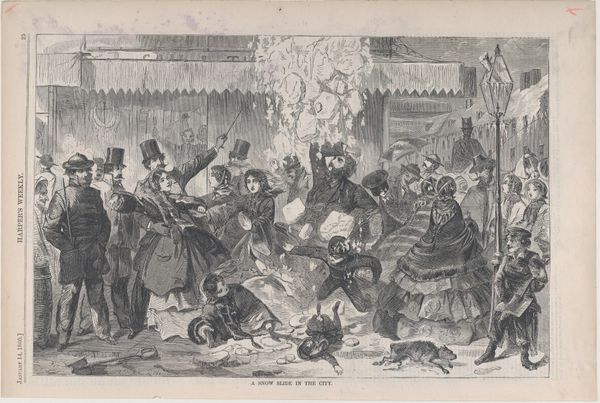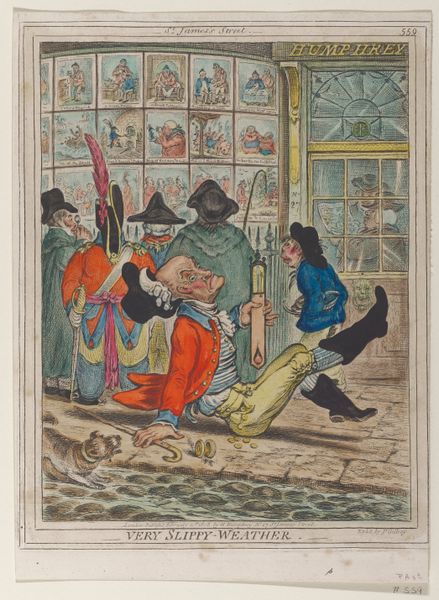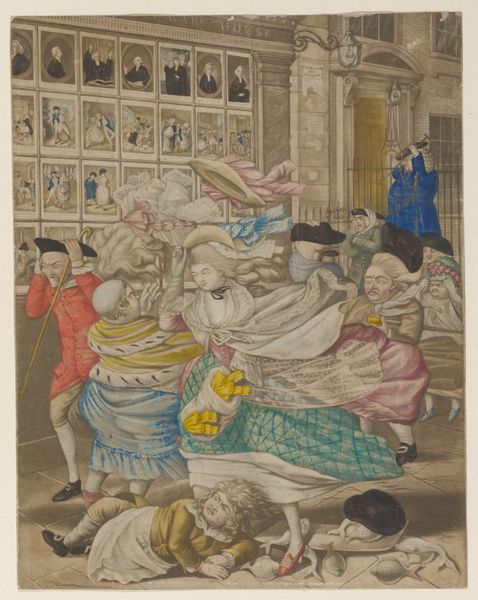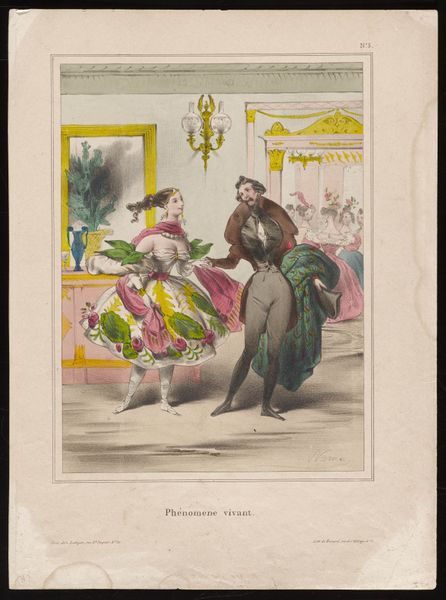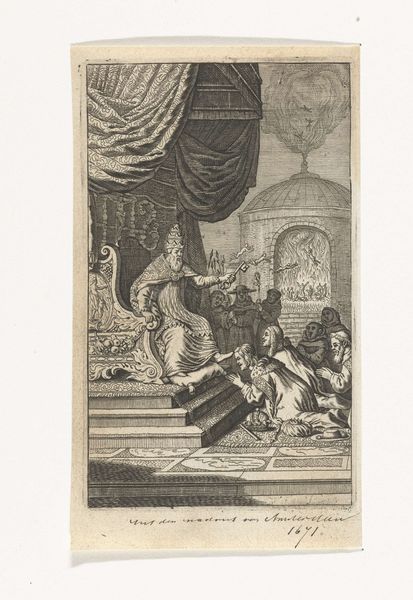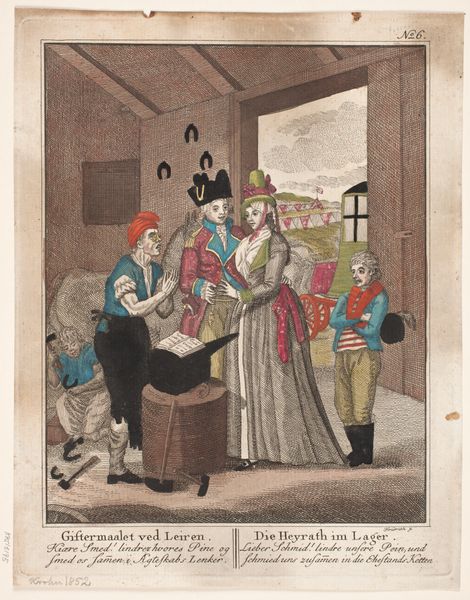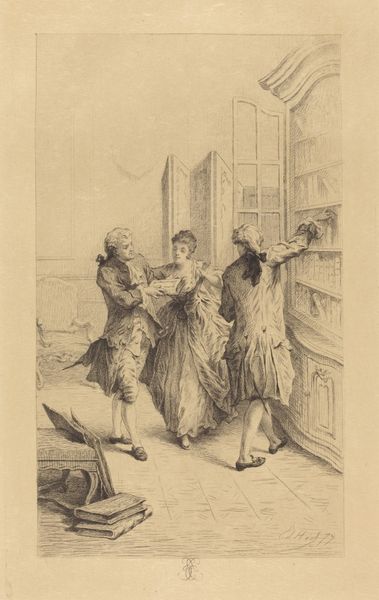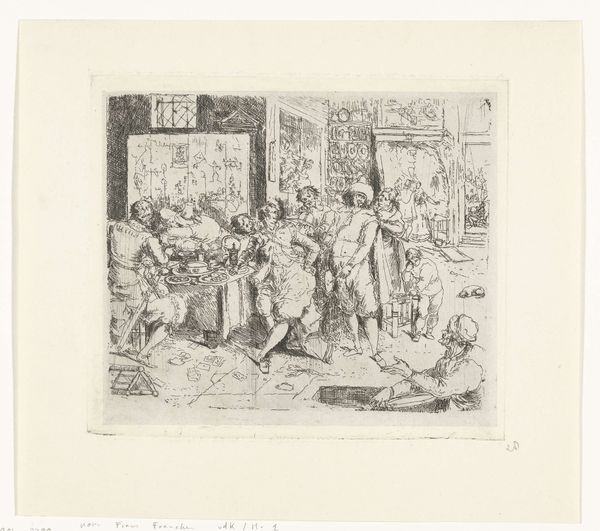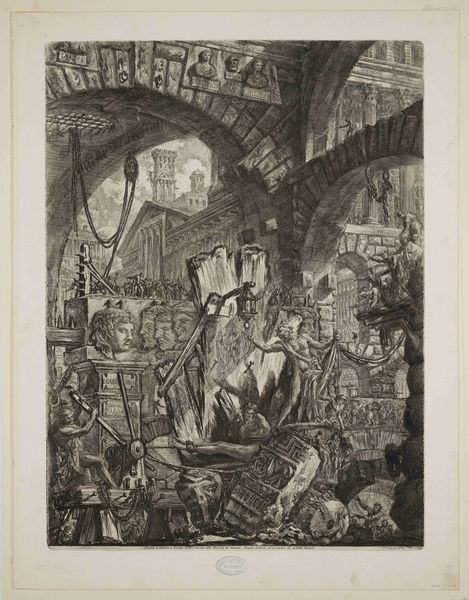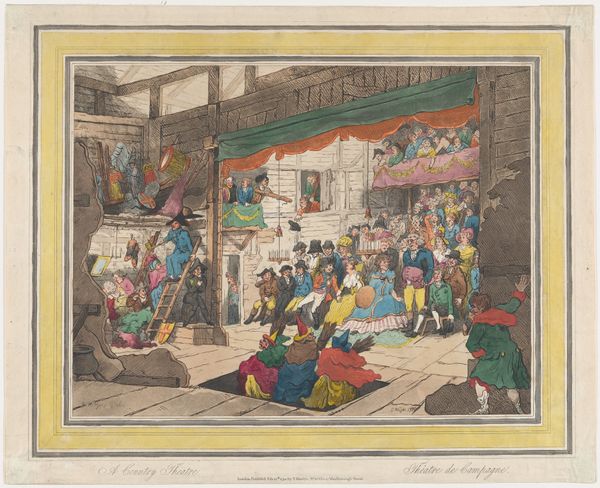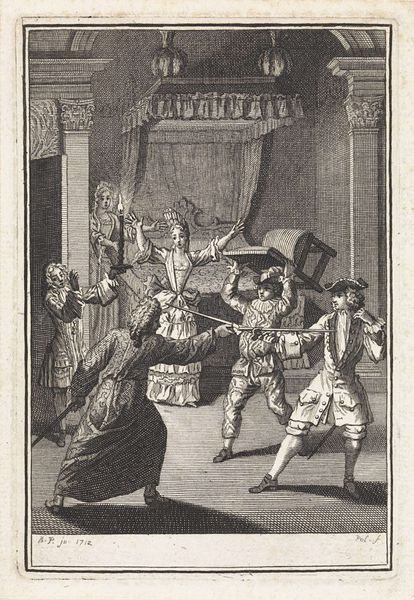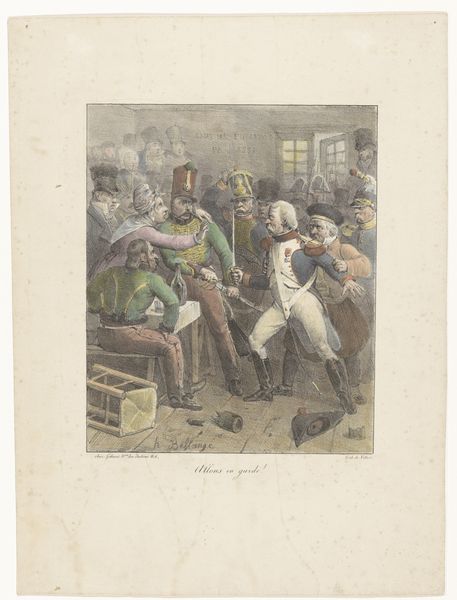
Blowing up the Pic Nic's or Harlequin Quixotte attacking the Puppets 2 - 1802
0:00
0:00
Dimensions: 14 x 10 in. (35.56 x 25.4 cm) (plate)
Copyright: Public Domain
Editor: This is James Gillray's "Blowing up the Pic Nic's or Harlequin Quixotte attacking the Puppets," a hand-colored etching from 1802. The chaos of the scene is immediately striking, with a figure in harlequin garb at the center seemingly disrupting some sort of performance. What do you see in this piece, beyond the immediate visual frenzy? Curator: I see a sharp critique of class and cultural pretension, embedded within the specific historical moment of its creation. The "Pic Nic's" were fashionable, exclusive gatherings, and Gillray frequently satirized what he viewed as their superficiality. Editor: So the Harlequin figure represents a kind of disruptive force against that superficiality? Curator: Precisely. Consider how Gillray is drawing on both the commedia dell'arte tradition with the Harlequin figure, and Cervantes' Don Quixote with the title’s playful misspelling "Quixotte". Harlequin's attack can be interpreted as an assault on the perceived artificiality of aristocratic entertainment. He’s disrupting the established order, poking fun at the elite. How does the work’s overt class commentary resonate today? Editor: I think it reminds us that art, even satirical art, can be a powerful tool for social commentary and disruption, targeting issues like elitism that unfortunately remain relevant. I hadn't considered how Gillray was blending theatrical traditions to make a point. Curator: And what of the figures cowering away, in what seems a theatrical box setting. Does it come across as elitist or performative? Considering that Gillray's satirical edge often critiqued social performances. Editor: The exaggerated reactions of the figures definitely makes me feel it’s performative. Almost as if they want to be seen as superior, so this disruption rattles their sense of social security. Thank you; it’s fascinating how much history and social commentary is packed into this one print! Curator: Indeed. Gillray invites us to consider the power dynamics embedded within cultural consumption and performance, urging us to critically examine who gets to participate and on what terms.
Comments
minneapolisinstituteofart almost 2 years ago
⋮
Richard Brinsley Sheridan, an Irish playwright and longtime owner of London’s Drury Lane Theatre, leads the attack of professional actors enraged by the amateur performers of the Pic Nic Society. From 1660 to 1843, only Patent Theatres (those licensed by the Crown) could stage performances of serious drama. The Pic Nic not only infringed upon the patents, they had the temerity to rehearse on Sundays. Sheridan brandishes his pen. In the swirls we read the names of newspapers that printed his anonymous screeds against the Pic Nics. The actors, both professional and amateur, were as recognizable to the London public as our celebrities are to us today. Gillray’s treatment of Sheridan was so well targeted that he was often depicted as a harlequin from this point forward.
Join the conversation
Join millions of artists and users on Artera today and experience the ultimate creative platform.

